#duchess marie sophie in bavaria
Note
Hello😁 can you share your favorite queens?
Thank you for the great ask anon, of course! 🥰
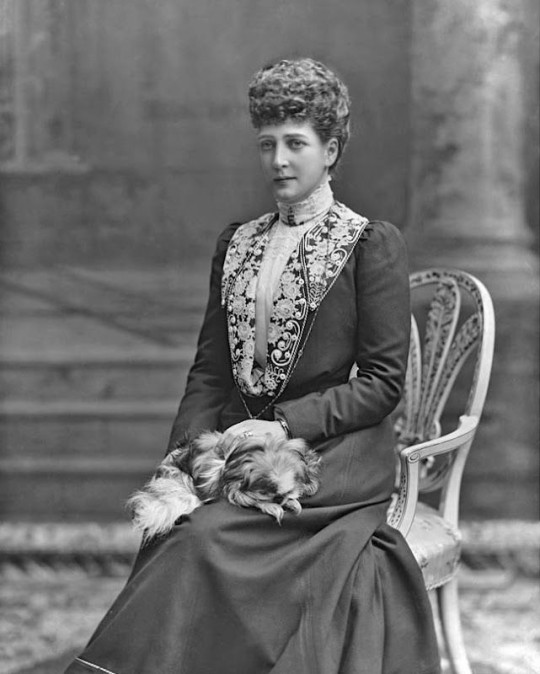
#1: Queen Alexandra of the United Kingdom – (nèe Princess Alexandra of Denmark, "Alix".
— She was beautiful, a warm and caring mother/grandmother, was popular as Princess of Wales and Queen Consort among of her people because of her good nature, and she supported many charities, including her own: "Alexandra Rose Day", founded by Queen Alexandra in 1912, this was a charity where flowers were being sold and all the money went to supporting Londoners in poverty. This was inspired by a priest in her native Denmark selling roses to raise money for those in need, Queen Alexandra brought the idea back to the United Kingdom. ❤✨

#2: Queen Anne Boleyn of England – (nèe Lady Anne Boleyn)
— She was intelligent, funny, caring and kind to all of people, and as her two years as Queen Consort she supported many charities, and even "gave alms to the poor, provided for widows, and even sewed shirts and smocks for the needy". She also helped with promoting new educational identities for monasteries, which were no longer under the protection of the Catholic Church. After only two years of being Queen Consort when she was said to have been 35 years old, she was executed after being imprisoned in the Tower of London for 17 days because she was accused of committing treason, but the true reason she was executed was because she failed to give King Henry VIII a male heir. ☹️💔

#3: Queen Marie Sophie of the Two Sicilies – (nèe Duchess Marie Sophie in Bavaria)
— She was beautiful, bright, and fierce. She was given the nickname the "Warrior Queen", the "Heroine of Gaeta" and the "modern Joan of Arc", rallying the troops, nursing the injured, feeding her forces at her own table and taunting Garibaldi's army from the battlements with the words; "Go ahead and shoot me. I will be where my men are". It was said of her that the Queen would "wipe your brow if you were wounded or hold you in her arms while you die". ❤️🔥👑
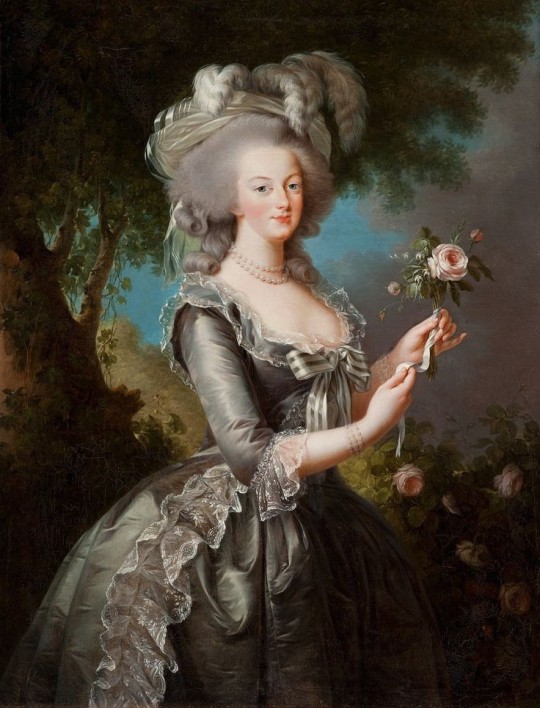
#4: Queen Marie Antoinette of France – (nèe Archduchess Marie Antoinette of Austria)
— She was honest, lovable, bold, a social butterfly who loved gambling, partying and extravagant fashions. Growing up she was closest with her sister, Maria Carolina, who was three years older, and with whom she had a lifelong close relationship. As Queen, Marie Antoinette was always unpopular, she spent lavishly, but her extravagance was only a minor cause of France's growing debt in the 1770-80s. Because of Louis XVI's indecisiveness, Marie played an increasingly prominent political role. But was very beloved for her charitable activities and patronage of the arts. She supported various charitable organizations and institutions, and she was also a benefactress of the poor. 💞🎀
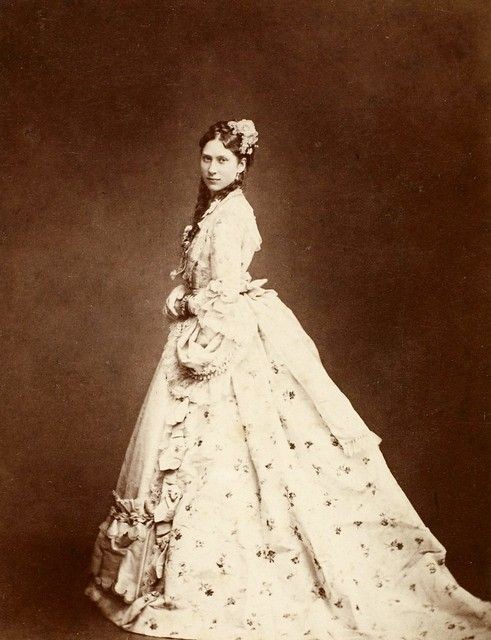
#5: Queen Lovisa of Denmark – (nèe Lovisa of Sweden)
— She was described as intelligent, with an ability to be natural, easy and friendly. And As Queen, she was mainly known for her many charity projects, an interest that she shared with her spouse. She did not care for ceremonial duties and public events, and lived a discreet life dedicated to her children and her interests in art, literature and charity. After a short tenure of only six years as Queen, she was widowed in 1912.
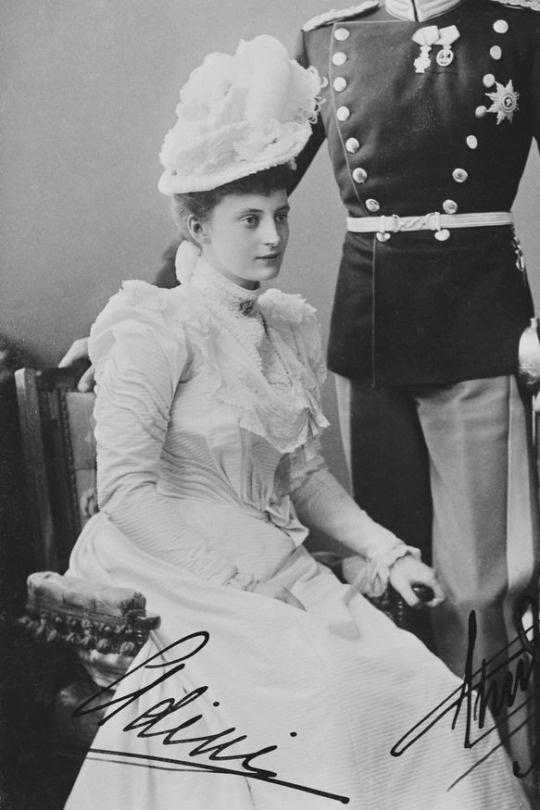
#6: Queen Alexandrine of Denmark – (nèe Alexandrine of Mecklenburg-Schwerin)
— She was reticent by nature. Her childhood was characterised by regular sporting activities, and from a young age she played the piano to a high standard. Her great interest in music stayed with her for her entire life and was passed on to her equally musical eldest son, Prince Frederik (IX). As of her first years as Queen, she had difficulty getting used to public attention, and she preferred to avoid the media limelight, but performed her functions in an exemplary manner. In the home her presence was crucial for the two boys, since Christian X was known for surrounding himself with a certain atmosphere of the barracks. Queen Alexandrine undertook extensive charity work until her death and was an avid golf player and photographer, who also loved doing needlework to a high standard. 💫
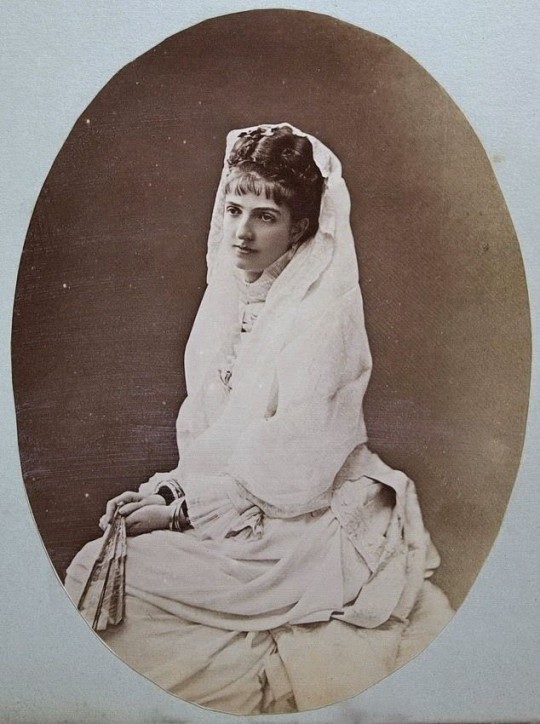
#7: Queen Margherita of Italy – (nèe Margherita of Savoy)
— She was described as sensitive, proud and with a strong force of will without being hard, as well as having the ability to be charming when she chose to. As to her appearance, she was described as a tall, stately blonde, but she was not regarded as a beauty. As Queen, she worked to protect the monarchy against republicans and socialists, and she gathered a circle of conservative intellectuals and artists known as the "Circolo della Regina" (Circle of the Queen) in her famous literary salon known as "Giovedì Della Regina" (Queen's Thursdays), where she benefited artists and writers.
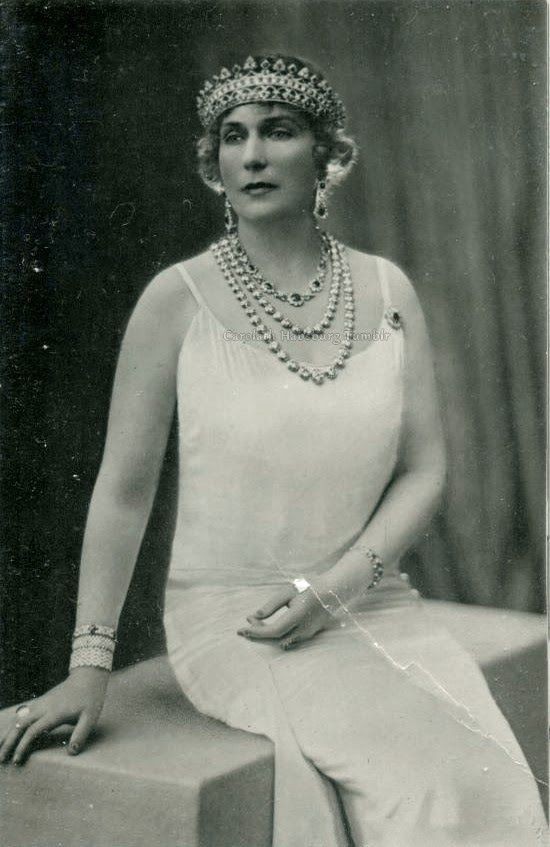
#8: Queen Victoria Eugenie of Spain – (nèe Princess Victoria Eugenie of Battenberg), "Ena".
— She was described as very kind but very strict and she devoted herself to work for hospitals and services for the poor, as well as to education. She also involved herself in the reorganization of the Spanish Red Cross. In 1929, the city of Barcelona erected a statue of her in a nurse's uniform in honour of her Red Cross work and since the the statue has been destroyed.

#9: Queen Elena of Italy – (nèe Elena of Montenegro)
— She was described as shy and reserved but also rather stubborn. Very attached to traditions, with a sensitive soul and a lively and curious mind, she was endowed with a strong love for nature: her favourite flower was the Cyclamen. She was a very tall woman of 180 cm (5'11). As Queen, her commitment to numerous charitable and welfare initiatives, which assured her great sympathy and popularity, was profuse. The Queen went well beyond mere charity: her evangelical spirit led her to practice every day the most genuine and most charitable love of neighbor.

#10: Queen Marie of Romania – (nèe Princess Marie of Edinburgh), "Missy".
— She was described as very beautiful and high spirited. As a young girl, Marie was very close with her sisters, but mostly her sister Victoria Melita, they played many games with their father and Marie's mother, the Duchess of Edinburgh neglected Marie and her sisters' education, considering them not very bright or gifted. But in the fields of painting and drawing, Marie and her sisters had inherited her grandmother, Queen Victoria's talent. On October 11th, 1914, Marie and her husband Ferdinand were acclaimed as king and Queen in the Chamber of Deputies. Princess Anne Marie Callimachi, a close friend of Marie, wrote that "as Crown Princess, she had been popular; as Queen, she was more loved". Marie maintained a certain influence on her husband and the entire court, leading historian A. L. Easterman to write that "it was not Ferdinand, but Marie who ruled in Romania".
#answered ask#queen alexandra#alexandra of denmark#anne boleyn#queen marie sophie of the two sicilies#duchess marie sophie in bavaria#marie antoinette#queen lovisa of denmark#lovisa of sweden#queen alexandrine of denmark#alexandrine of mecklenburg-schwerin#queen margherita of italy#margherita of savoy#queen victoria eugenie of spain#princess victoria eugenie of battenberg#queen elena of italy#elena of montenegro#queen marie of romania#princess marie of edinburgh#informational
14 notes
·
View notes
Note
Who are all of the children of Maximilian in Bavaria and Ludovika in Bavaria? I only know Sisi
Hello! Sorry it took me so long, I’ve been putting together this answer for a while. This is a somewhat basic introduction to the siblings, since I didn’t want this post to be even longer than already is.
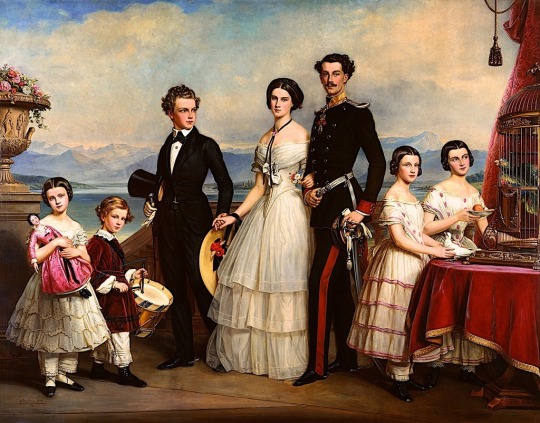
Duke Maximilian and Duchess Ludovika had a total of ten children, five girls and five boys. Their second son, Wilhelm Karl, sadly died at a month and half old, and their fourth son, Maximilian, was stillborn. The surviving eight children were (by order of birth): Ludwig Wilhelm, Helene, Elisabeth, Karl Theodor, Marie, Mathilde, Sophie and Maximilian Emanuel.

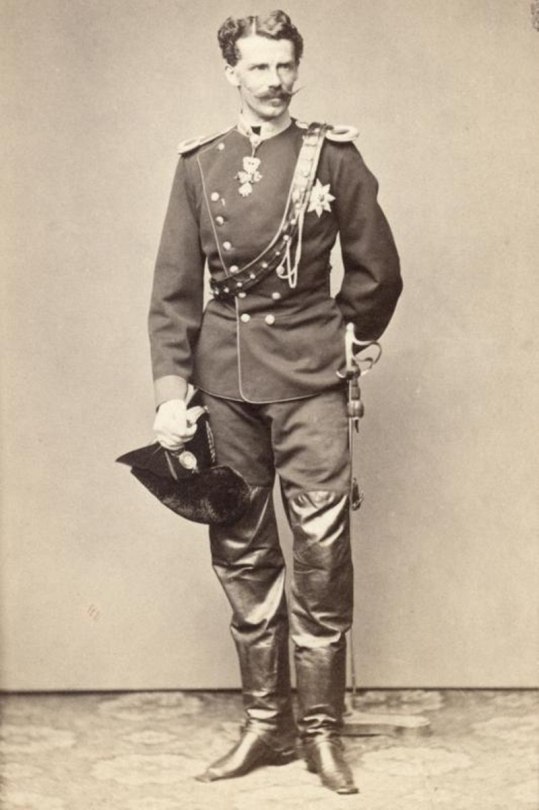
The eldest, Ludwig Wilhelm, born in 1831, was always known as “Louis” in his family. In 1858 he gave up his position as the future head of the Dukes in Bavaria branch in order to marry his mistress, former actress Henriette Mendel. He seems to have been somewhat difficult, at least judging by something Elisabeth told to her lady-in-waiting Countess Mária Festetics: “It is a good thing that Henriette is his wife, for anybody else would long since have left him, and he is happy with her.” What does this exactly mean I have no idea. Louis and Henriette had two children, Marie (born a year before her parents marriage) and Karl, who died as a baby. As was customary for Wittelsbach princes he did a military career, and in 1866 fought in the Seven Weeks War. We don’t really have much more information about him; many accounts about the Duke and his family that come after the Mayerling affair, in which his daughter Marie Larisch played a key role as the go-between Crown Prince Rudolf and Mary Vetsera, are heavily affected by the negative reputation that had befallen over her. His relationship with his sister wasn’t unaffected by this either, and he and Elisabeth became distant, though Elisabeth’s daughter Marie Valerie still wrote affectionately of her “Aunt Henriette”, so it may have been more out of a sense of awkwardness than Louis being directly blamed for the affair. He went to Elisabeth’s funeral, visibly affected by his sister’s death, and was one of the men who took her coffin to the Capuchin Crypt. A year after his wife’s death in 1891 he married actress Antonie Barth, forty years his junior. This marriage ended up in a divorce in 1913, after she had a child whom Louis claimed wasn’t his (I found some gossip articles about this on newspapers but that’s a whole rabbit hole I haven’t gone down yet). Ludwig Wilhelm died in Munich 1920, aged eighty-nine-years-old.
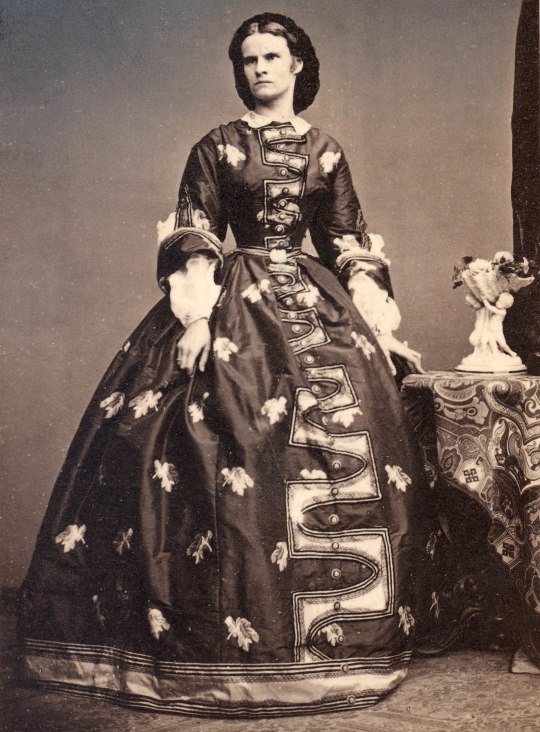

Born in 1834, the third child an eldest daughter, Helene, nicknamed “Nené” and “Lenza”, is probably the most known of Sisi’s siblings, and also the most misrepresented. She has gone down in history for being the disciplined, exemplary daughter that was groomed for years to become empress only to have “her fiancé” stolen by her younger sister. Except that none of this is true. In her old age Ludovika often complained that Helene had been a troublesome child who had caused her a lot of grievances. And it’s unlikely that Helene had ever expected, let alone been prepared, to become empress years in advance: not only there had been serious attempts to get Princess Anna of Prussia’s hand for Franz Josef in 1852 (why would they have done this if Helene was supposedly waiting in the wings to marry him?), but also when Ludovika was told that the emperor wanted to marry Sisi she became very emotional “for in her great modesty she had always doubted that the Emperor would really think in one of her daughters”.
By late 1857 Ludovika lamented that her daughter had pretty much become a spinster. But in the beginning of 1858 Helene met Maximilian, Hereditary Prince of Thurn und Taxis, and soon after he proposed. This marriage wasn’t well received by King Maximilian II, since the Taxis were subjects of the Bavarian king and therefore not equal to marry a Wittelsbach, but eventually King Max gave them the all-clear and they married. Reportedly the marriage was happy, but her husband sadly died only ten years later of an illness, and she fell into a deep grief. When Helene’s father-in-law died in 1871 she became the de facto head of the house of Thurn und Taxis until her son Maximilian reached the majority. Helene was sadly to suffer two more big blows in her life: in 1881 her daughter Elisabeth died of childbirth complications aged only 20-years-old, and in 1885 her son Maximilian died of cardiac problems aged only 24-years-old. Helene’s last years are said to have been very sad, since she never recovered from the untimely deaths of her husband and children. She died in 1890 at the age of 56, likely of cancer. At her deathbed were her two surviving children, Louise and Albert, and her sister Elisabeth.

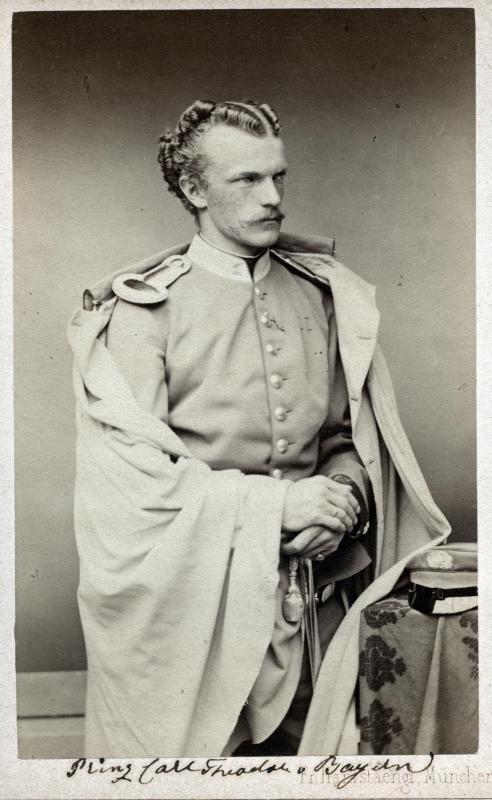
The fifth child and third son, Karl Theodor, called “Gackl” by his family, was Elisabeth’s favorite brother. He seems to have been a very charismatic man, since everyone that met him had nothing but good things to say about him. In 1865 he married his first cousin Princess Sophie of Saxony, and they had one daughter, Amalie. Sadly Sophie’s health was severely affected by childbirth, and died over a year later of influenza. Like his elder brother he also did a military career starting from a young age, and fougth in the Seven Weeks War. However, afterwards he left active service and went to the Ludwig Maximilian University of Munich, where he studied medicine. His studies were interrupted by the Franco-Prussian War, but he got his degree as a doctor in medicine, later specializing in ophtalmology. During this time Karl Theodor had remained a widower, but in 1874, seven years after his wife’s passing, he married Infanta Maria José of Portugal, daughter of the deposed King Miguel I of Portugal and seventeen years his junior. They had five children: Sophie, Elisabeth, Marie Gabrielle, Ludwig Wilhelm and Franz Josef. Gackl became a renowned oculist, and in 1895 he opened the Augenklinik Herzog Carl Theodor (Duke Carl Theodor Eye Clinic) in Munich, which exists to this day. He personally operated thousands of people, assisted by Maria José, and later also by his daughters. Karl Theodor died in 1909, a few weeks after his 70th birthday, from bronchitis.


While Helene is the most known of Elisabeth’s sister solely because everyone and their moms know the (incorrect) story of her being “rejected” by FJ, the sixth child and third daughter, Marie, is the most famous sister for her own merits. She was the last Queen of the Two Sicilies as the wife of King Francesco II, and has gone down in history for leading the resistance during the Siege of Gaeta, the last stand of the Bourbon dynasty in Naples. She was only nineteen when her husband finally surrounded, and lived in exile for the rest of her life. After ten years of marriage Marie and her husband had one child, Maria Cristina, who sadly passed away while still a baby. They tried to have more children, but all her pregnancies ended up in miscarriages. She spent the rest of her life traveling; when WWI broke she settled down in Munich, where she died aged 82 in 1925.
Marie has gotten an interesting reputation: she is either known for being the brave queen who stood up next to her troops until the end, or for being a haughty woman who deeply envied her imperial sister and lived full of resentment. The first is just one, although crucial, brief moment in her life; and the second is literally just what Mária Festetics, one of Elisabeth’s ladies-in-waiting, thought of her. Once I realized how little we actually knew about Marie, how much is just hearsay and speculation, she became fascinating to me, but sadly we still don’t have a good biography about her that uses primary sources instead of relying in gossipy second hand accounts.
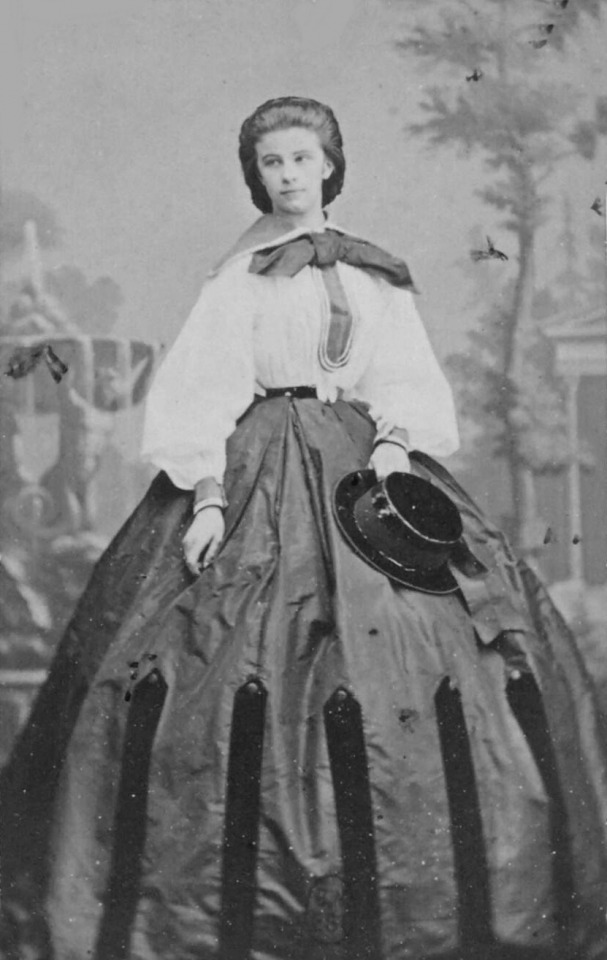

Mathilde, called “Spatz” (Sparrow), is the sister we have the least information of. She and Marie were the closest of the sisters; they were always together, and would often even dress the same (as you can see in the Stieler portrait). In 1861 Mathilde married Prince Luigi, Count of Trani, half-brother of Marie’s husband, and joined her sister in Rome, were the Bourbons in exile had settled their court. The marriage turned out to be unhappy, since her husband was an alcoholic and cheated on her, though they did had one child: Maria Teresa, called “Mädi”, born in 1867. Mathilde and Luigi separated eventually, though she did went to his aid and nurse him when he was sick. But the person she dedicated her life was her daughter, who for many years suffered from poor health (likely sclerosis); Mathilde took care of Mädi until her death, aged only 42. She spent the last years of her life with her sister Marie, and died only months after her, in 1925.


The youngest daughter, Sophie, born in 1847, is probably the most “romantic” of the Wittelsbach sisters. Just like Helene she has gone down in history for being a “rejected bride”, though in her case, it’s actually true. She was briefly engaged to her cousin Ludwig II of Bavaria, and it was an absolute disaster: he had no interest in marriage (not really that surprising when you consider that he was gay) and often publicly snubbed Sophie; she in turn was absolutely miserable because she felt he was playing with her. Ludwig kept postponing the wedding until Sophie’s father, Duke Max, send him an ultimatum, to which the king responded by just canceling it. As if these months hadn’t been stressful enough for Sophie, during this time she also had an affair with Edgar Hanfstaengl, the son of the court photographer. I don’t really know much about this liaison, only that she was aided by two ladies-in-waiting in order to meet him in private and that some love letters she wrote to him have survived. But whatever the extent of her feelings, the relationship could never become serious, and one year later she married Prince Ferdinand of Orléans, Duke of Alençon, a grandson of King Louis Philippe I of the French. I don’t know if this marriage was ever a love match or if Sophie simply wanted to settle down for good after all her failed romantic experiences; whatever the case they did have two children, Louise and Emmanuel. The Orléans had been living in exile in England since the deposition of Louis Philippe, and only after the fall of the Second French Empire in 1872 were they allowed to return to France. This probably improved Sophie’s mood, since she had suffered from depression since her children’s birth, and the English weather didn’t make her feel better.
After the death of her former fiancé Ludwig II in 1886, Sophie fell ill and on advice of her brother Gackl she searched for a treatment in Munich under a Dr Glaser. But while he treated her she fell in love with her doctor, who was also married with children. This time Sophie didn’t want to give up her enamored, and did something unthinkable for a woman of her status in the 19th century: she sought for a divorce from Ferdinand. Sadly things didn’t work out for her, because her husband, on the advice of her brother Karl Theodor, retaliated by having Sophie interned in a mental clinic for “moral insanity”, where she suffered the appalling “treatments” for mental illnesses of the time. After seven months she was considered cured, and allowed to leave the institution. She never again tried to divorce.
Sophie dedicated the last years of her life to charity work. In 1897 she was one of the organizers of the Bazar de la Charité, an annual charity event held in Paris since 1885, and was in the place when an accident set it on fire, taking the lives of 126 victims. She was one of the victims of the fire, and although she had the chance to leave she refused she refused to abandon the Bazar until everyone else was out, guiding and helping people to find the exist until her last moments. She had been fifty-years-old.


Lastly the youngest child Maximilian Emanuel, nicknamed “Mapperl”, is the brother we know the least about. Born in 1849, he was only two years and a half younger than his sister Sophie, whom he was the closest to: they were often referred as “die Kleinen” (the little ones). As his eldest brothers he did a military career, and fought both in the Seven Weeks War (aged only sixteen!) and in the Franco-Prussian War. At Sophie’s wedding he met and fell for a cousin of the groom, Princess Amalie of Saxe-Coburg and Gotha, which would have been great… if she hadn’t been already engaged to Prince Leopold of Bavaria. Here’s when things get a bit messy: according Briggitte Hamann, Elisabeth found out about the situation and decided to step in and free Mapperl’s beloved… by introducing her daughter Gisela to Leopold. Which is. Hmmm. A questionable thing to do. However, other authors claim that Elisabeth actually had nothing to do with that, specially considering that Mapperl’s wedding took place three years after Leopold and Gisela got engaged - if the goal was to make Amalie available, he definitely took his sweet time to make his move. One day I’ll look deep into it because I’m genuinely curious as to which is the truth; whatever the case, both couples had happy marriages, so good for them. Max Emanuel and Amalie had three sons: Siegfried, Christoph and Luitpold. Sadly Max Emanuel died quite unexpectedly in 1893 from an ulcer, aged only 43-years-old.
Again, this is only an introduction to the siblings, there’s far more information out there that I could possibly put in a single post. Thank you for your question! The Dukes and Duchesses in Bavaria are really interesting an I think they deserve the spotlight as much as their imperial sister.
#a lot of this i wrote from memory + copying my own previous posts + checking dates and names on wikipedia#so please forgive my lack of sources and sorry if there are mistakes!#house of wittelsbach#duke ludwig wilhelm in bavaria#helene in bavaria hereditary princess of thurn und taxis#karl theodor duke in bavaria#queen marie sophie of the two sicilies#mathilde in bavaria countess of trani#sophie in bavaria duchesse d'aleçon#duke maximilian emanuel in bavaria#asks
20 notes
·
View notes
Text
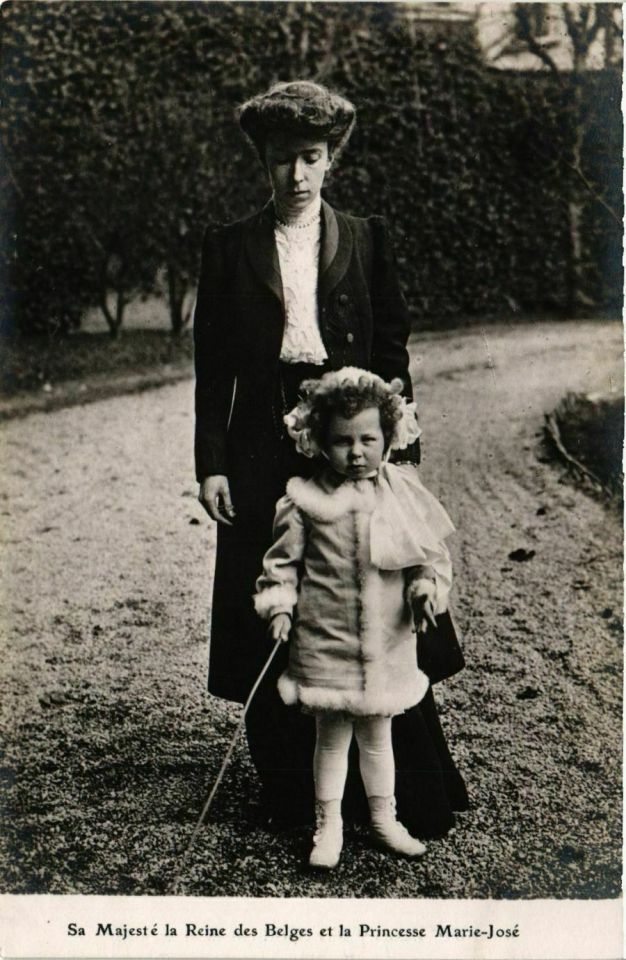
Duchess Elisabeth Gabriele Valérie Marie of Bavaria, Queen consort of the Belgians with her daughter Princess Marie-José Charlotte Sophie Amélie Henriette Gabrielle of Belgium, later Queen consort of Italy
Belgian vintage postcard
#marie-josé#queen#bavaria#marie#briefkaart#vintage#sophie#henriette#postcard#postkaart#sepia#princess#carte postale#postal#charlotte#duchess#amélie henriette gabrielle#belgium#valrie#elisabeth#photo#belgian#italy#ansichtskarte#ephemera#belgians#historic#amlie#gabriele#gabrielle
2 notes
·
View notes
Text
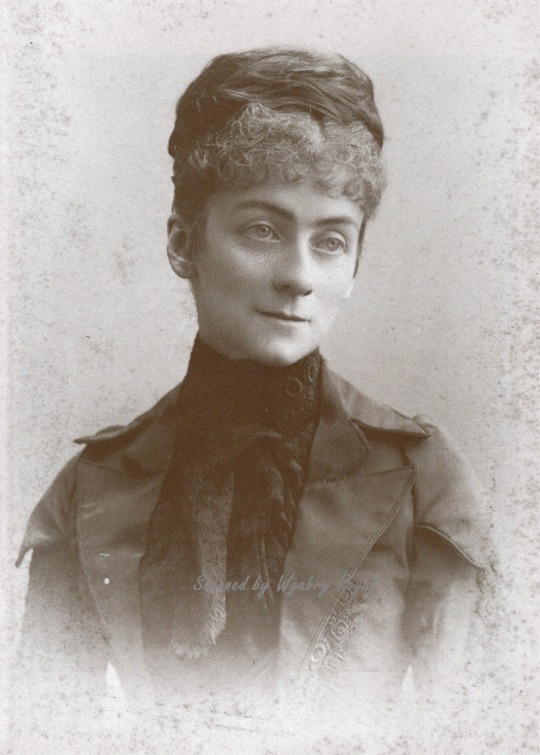
Duchess Sophie Charlotte Augustine in Bavaria wife of Ferdinand Philippe Marie d'Orléans, duc d'Alençon
Source "Das Familienalbum von Kaiser Franz Joseph und Elisabeth"
11 notes
·
View notes
Photo


→ Duchess Elisabeth Amalie Eugenie was born in Munich on December 24, 1837, as the fourth child of Duke Maximilian Joseph in Bavaria and Princess Ludovika. Nicknamed Sisi, she enjoyed an informal upbringing before marrying Emperor Franz Joseph I at the age of sixteen. Shy and unsure, Sisi crumbled under the strict court etiquette, which left her isolated and friendless. Her melancholy and distaste for public life was treated as a childish indulgence by her distracted husband and his mother, the formidable Archduchess Sophie. Despite her somber demeanor, Sisi captivated the public thanks to her stunning beauty and ankle-length chestnut hair. Early in her reign, Sisi developed a deep interest in Hungary, then a rebellious part of her husband’s empire. She believed the Hungarian people deserved greater freedoms and respect. In 1867, Hungary became an equal partner in the Austro-Hungarian empire. Franz Joseph was crowned King of Hungary and Sisi became queen - she was beloved by the Hungarian people. The death of Elisabeth’s only son and his mistress Mary Vetsera in a murder–suicide at his hunting lodge at Mayerling in 1889 was a blow from which the Empress never recovered. She withdrew from court duties and travelled widely, unaccompanied by her family. While travelling in Geneva in 1898, Elisabeth was mortally wounded by an Italian anarchist named Luigi Lucheni. Her tenure of 44 years was the longest of any Austrian empress.
257 notes
·
View notes
Text
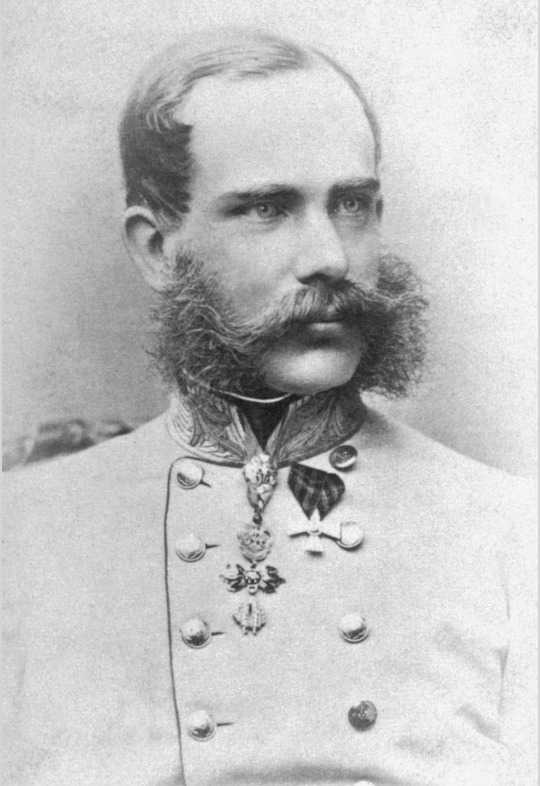
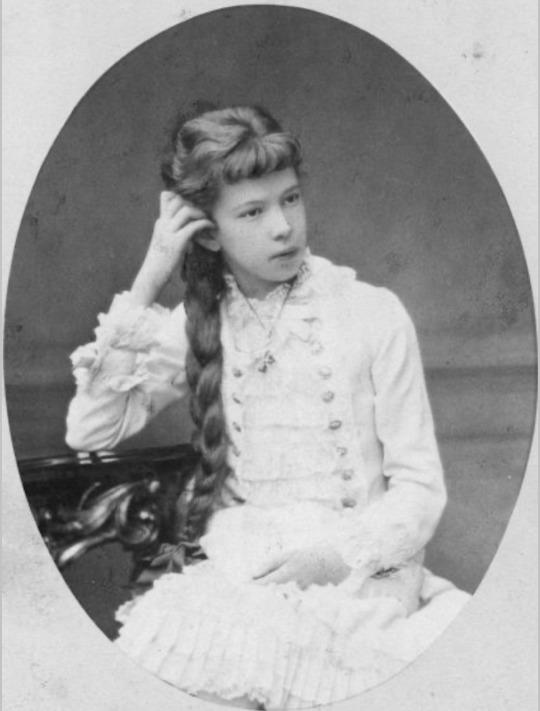

~ Rumors About Our Daughter ~ (fan fiction requested by @historical-epic)
Rumors questioning Archduchess Marie Valerie of Austria’s legitimacy have been circulating within the Austrian Court. What do her parents think about this? What do they do?
Characters: Archduchess Marie Valerie of Austria, Emperor Franz Joseph I of Austria, Empress Elisabeth of Austria
Valerie heard her mother talking to a random maid servant in the drawing room of their summer home Kaiservilla in Bad Ischl. Thought it sounded more like arguing to her.
“Don’t you dare make such treasonous accusations!” Elisabeth shouted, loud enough for 8 year old Valerie to make out what she said.
“Y-Y-Your Majesty….I didn’t mean to…I was just implying that”
“What, that my daughter is illegitimate? That her father is not The Emperor? How dare you!”
Valerie had never heard her mother this angry before. It was quite shocking, more shocking than the rumors of her own illegitimacy.
These rumors were swirling in and out of Kaiservilla for months now, mostly the fancy talk of lower servants. When the imperial family arrived, the servants had to be more careful about their gossiping and shut out their willful thoughts as these thoughts could imprison them for life, or even worse, death.
Emperor Franz Joseph I was married to Duchess Elisabeth of Bavaria, who later became Empress Elisabeth of Austria by marriage. But everyone close to her called her either Mother or Sisi.
Together they had four children. Archduchess Sophie, who died young, Gisela, Rudolf, and Marie-Valerie. They all lived somewhat happy lives although there were problems in all.
Franz and Sisi had to bear the burden of ruling an all powerful Austro-Hungarian empire, Rudolf had to bear the burden of being heir, Gisela had to bear the burden of being unloved by her parents (it was very complicated), and Valerie now had to bear the burden of various rumors spreading about who her real father was.
There are plenty of servants and nobles who live at Kaiservilla and that means that there are various mouths to blab whatever they want about whoever they want.
A few months ago, the topic of Empress Sisi and her lover Count Andrássy was being spoken about and somebody must’ve put together that Valerie might not have been her father’s daughter.
These were obviously just nonsensical rumors because Valerie was Franz’s child. She was legitimate.
But Valerie herself didn’t know that and neither did all of the servants who had been blabbing their mouths off for months.
“Get out of my sight! Sisi practically screamed at the frightened chamber maid who unfortunately gossiped at the wrong time to a footman.
The maid scurried off and Sisi sat down on the nearest chair and was trying to hold in tears.
“Mama..” Valerie walked in from the other room. “Was that maid talking about me?” She asked.
“Oh darling” Sisi held out her hands to embrace the trembling young girl who started to cry.
“Don’t pay any mind to what that filthy servant said. It was all lies and it wasn’t true at all.”
Sisi stroked her daughter’s unruly dark brown hair and continued to do so until Valerie broke the embrace.
“But Mama…I heard it all…I don’t know what this all means.” Valerie was on the verge of hysterics.
Seeing her mother so upset ignited something in her that is usually hidden away. It made her angry and confused and utterly upset.
“Valerie darling” Sisi soothed. “All you have to believe is that you are your father’s daughter, you are my daughter. If somebody said that you aren’t then shame on them!”
Sisi gave her youngest daughter a little playful slap which turned the sad frown on Valerie’s face into the wide smile that would be seen playing outside with her dogs or drawing pictures with her mother.
“You are Archduchess Marie Valerie of Austria, youngest daughter of Emperor Franz Joseph I of Austria, King of Hungary. That is who you are and you can’t listen to anybody if they say otherwise, especially the nasty servants who gossip.” Sisi softly placed a hand on Valerie’s face.
“Okay Mama, I love you very much.” The two hugged firmly again.
“Next time Valerie, don’t eavesdrop okay?” Sisi said strictly, but with a laugh.”
“Okay Mama!” Sighed smart Valerie as she skipped out of the room.
~
Later that night, when Valerie was doing her nighttime prayers, Sisi was informing Franz about the events of the day.
“Franz, darling,” Sisi spoke to her husband who was sitting calmly on the bed taking his boots off.
“Many people are questioning Valerie’s legitimacy, today I caught a maid servant gossiping with a footman. I’m greatly concerned.” Sis went over to sit next to Franz who wrapped his arm around her.
“Darling, you know those rumors are false. I remember the night we conceived. It couldn’t possibly be anyone else. What makes you so worried?” Franz said
Sisi wanted to say that the rumors were specifically stating that Count Andrássy was the suspected father and that she never did anything with him except one small kiss, but she couldn’t say that to her husband.
She loved Franz and Andrássy’s kiss brought her no affectionate feelings, minus disgust and anger, but this was just not the right time.
That was a story for another day.
Sisi decided to tell Franz the truth about half of the worries about this situation.
“I’m worried because Valerie was in the other room and she could hear me yelling at that maid.” Sisi was close to tears.
“She has never heard me that angry before and she came up to me afterword and was quite distressed...” Sisi wept into Franz’s arms while he gently stroked her back.
They might not have been passionate soulmates, but after all these years of marriage, Franz still loved Sisi, and the feeling was mutual.
“Sisi darling hush now, I will talk to her, I promise.” Franz stated his wife in the eye and gave her a gentle kiss on the forehead.
He then exited the room and let Sisi undress peacefully.
As Franz was walking to Valerie’s rooms, he couldn’t stop himself from thinking more deeply about the rumors.
Why would anyone think that Valerie is not my daughter?
Valerie heard a sudden knock on her bedroom door.
“Valerie, darling, it’s Papa, can I come in?”
“Enter.” Valerie spoke softly as her nanny calmly put the book away and exited the room.
Franz came in and slowly sat down on Valerie’s bed.
“What’s wrong Papa?” Valerie noticed the solemn look on her father’s usually joyful face. At least he was joyful when she was around.
“Valerie…” Franz spoke in a nervous but fairly calm tone. “Mother told me about what happened today.”
Valerie’s face fell into a sad frown.
��Does everyone think like that maid thinks?” She said desperately. “Mama says that I shouldn’t listen to them…but I did.”
“Oh Valerie my dearest,” Franz wrapped his daughter in a tight embrace and rocked her around like he did when she was a baby.
“Look in my eyes, Valerie, you are my daughter. Nothing can or will ever change that.” Franz was disgusted by these ugly rumors. His heart knew that Sisi could’ve and would’ve been unfaithful at times, and he could’ve been too. But he knew deep down in his heart that Valerie was his child, nothing could convince him otherwise.
“Papa is that really the truth?” Valerie asked longingly.
“Darling,” Franz cooed. “It will forever be the truth.”
“Oh Papa I love you so much!” Valerie gave her father a kiss on the cheek and a tight squeeze before hopping under her covers.
Franz kissed the little girl goodnight and exited calmly.
He knew that everything was going to be okay, and if not, he would take care of it.
~
#I hope you like this!#🤍#rumors about our daughter#fan fiction#historical-epic#history fan fiction#My fics#archduchess marie valerie#archduchess Marie Valerie of Austria#Marie Valerie of Austria#emperor franz joseph#empress elisabeth of austria#franz joseph i#Elisabeth of Austria#Austrian royal family
25 notes
·
View notes
Text
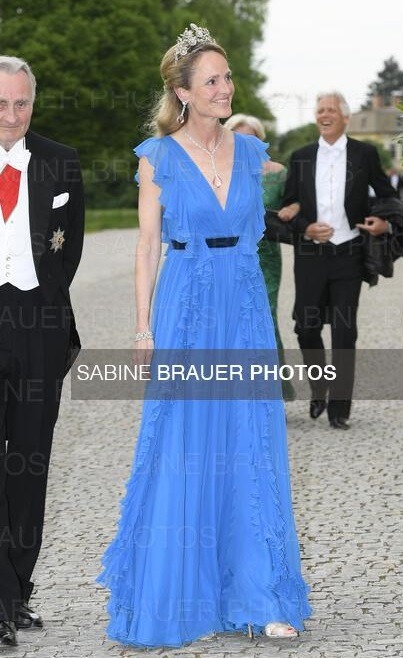
TIARA ALERT: Duchess Marie Caroline of Bavaria wore the Douglas Floral Tiara for the ball following the wedding of Prince Ludwig & Princess Sophie of Bavaria at Schleissheim Palace in Munich, Germany on 20 May 2023.
#Tiara Alert#Duchess Marie Caroline#Bavaria#Bavarian Royal Family#tiara#Germany#German Royalty#floral tiara#diamond
33 notes
·
View notes
Text

Queen Marie Sophie of The Two Sicilies, born Duchess in Bavaria. A carte de visite photograph by Fratelli D'Alessandri, Rome circa 1861. From my own collection.
#sisi#sissi#empress elisabeth of austria#empress sisi#royalty#mariesophieofnaples#queenmariesophieofnaples#reginamariasofiaborbone#reginadelsud#kaiserinelisabeth#eroinedigaeta#italy#naples#sicily#queenmariesophieofthetwosicilies#cdv#cartedevisite#history#royal history#royal#casarealdiborbone#houseofbourbontwosicilies
18 notes
·
View notes
Text
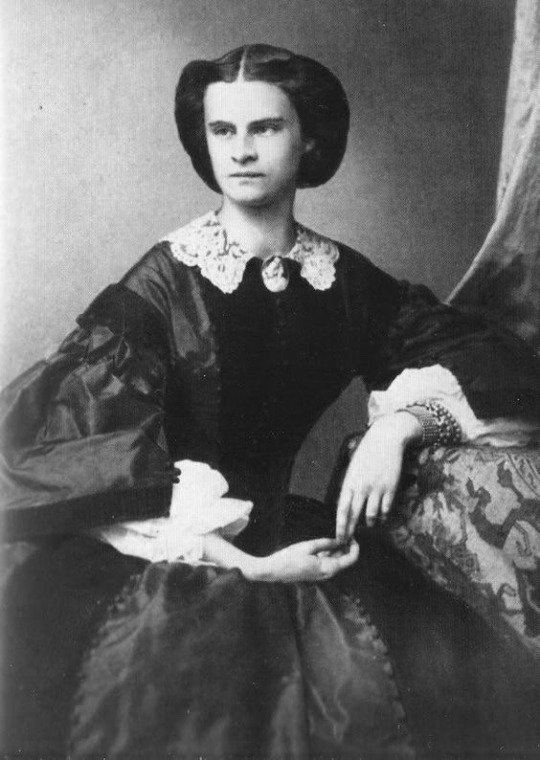
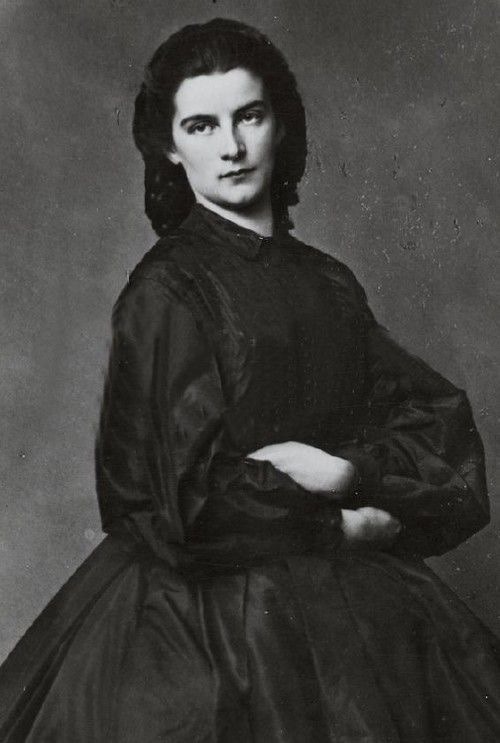
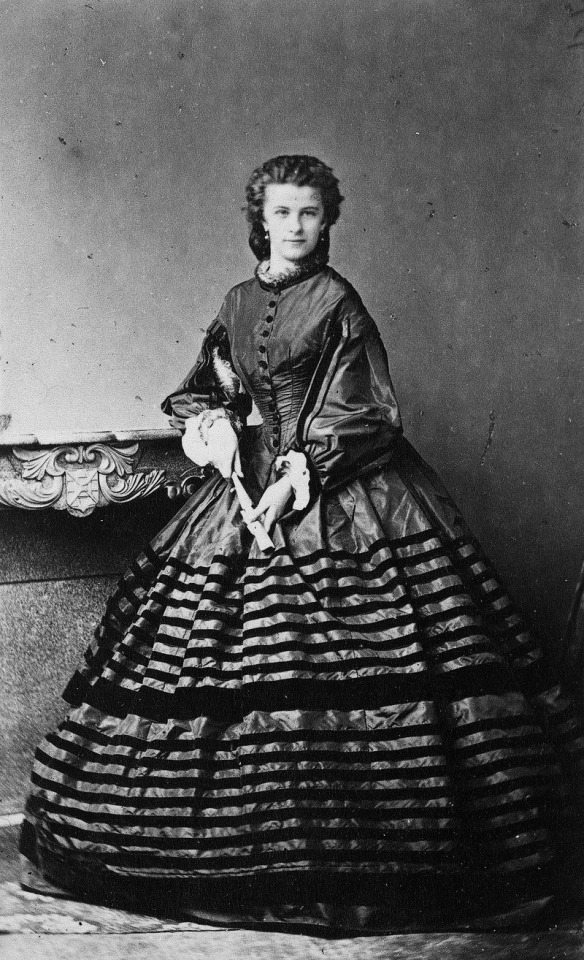

The four sisters of Elisabeth (left to right) :
Helene Caroline Therese, Duchess in Bavaria then Hereditary Princess of Thurn and Taxis. (1834-1890)
Marie Sophie Amélie, Duchess in Bavaria, Duchess of Calabre then Queen Consort of the Two-Sicilies. (1841-1925)
Mathilde Ludovika, Countess of Trani. (1843-1925)
Sophie Charlotte Auguste, Duchess in Bavaria then Duchess of Alençon. (1847-1897)
#Marie-Sophie in Bavaria#Helene in Bavaria#Mathilde in Bavaria#Sophie-Charlotte in Bavaria#old photographs#portraits#sisters#sisterhood
4 notes
·
View notes
Note
prettiest royal woman iyo?
Queen Alexandra

Empress Maria Feodorovna

Grand Duchess Tatiana Nikolaevna
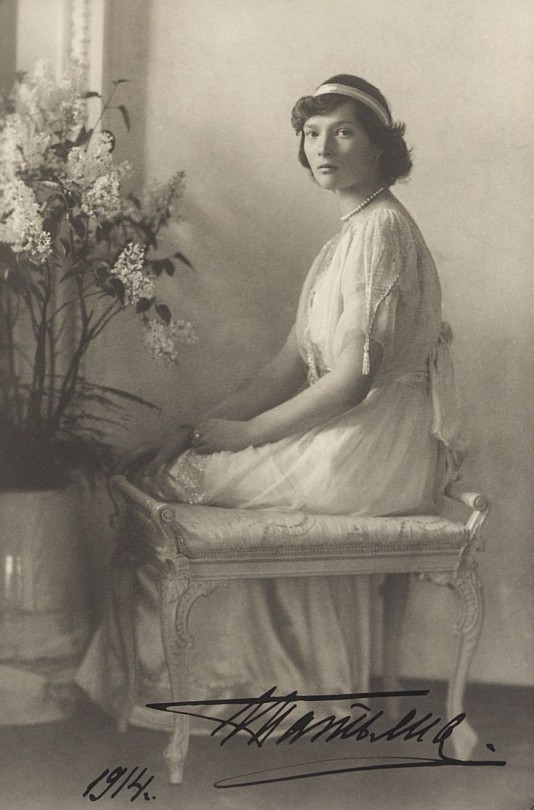
Empress Victoria of Germany
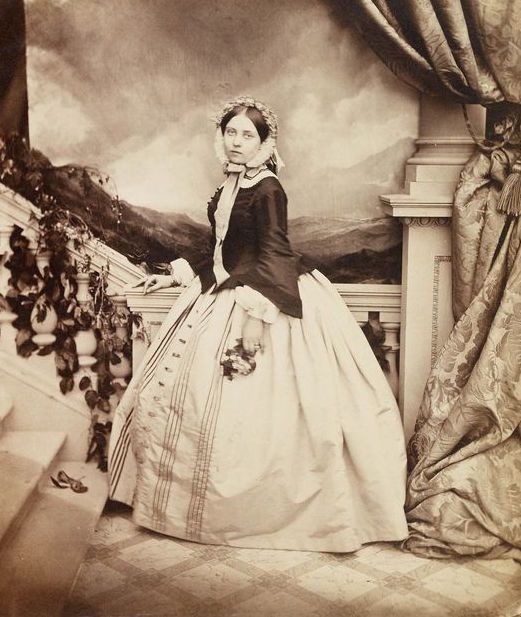
Queen Maud of Norway

Grand Duchess Elisabeth Feodorovna
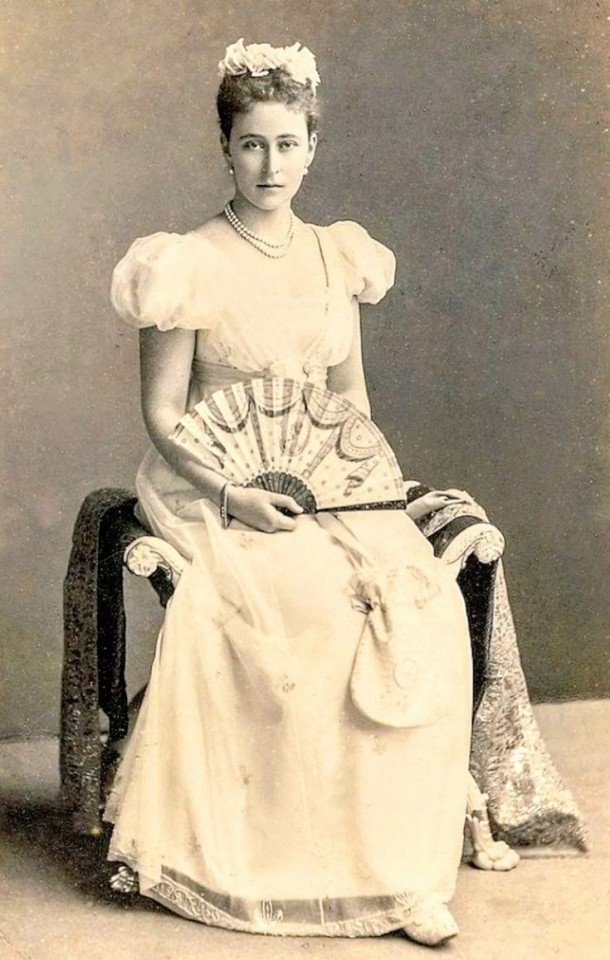
Queen Sophia of Greece
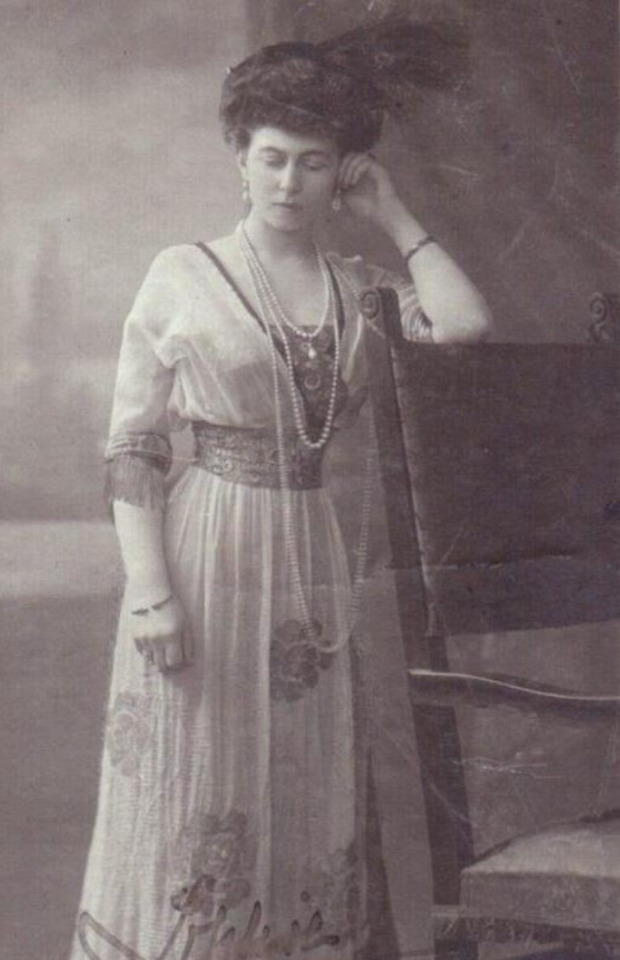
Queen Maria Sophie of the Two Siciles
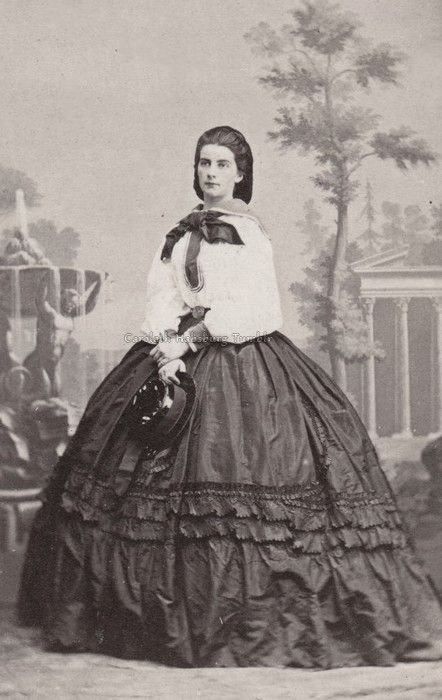
Princess Margaret

Princess Beatrice of Edinburgh, Duchess of Galliera.
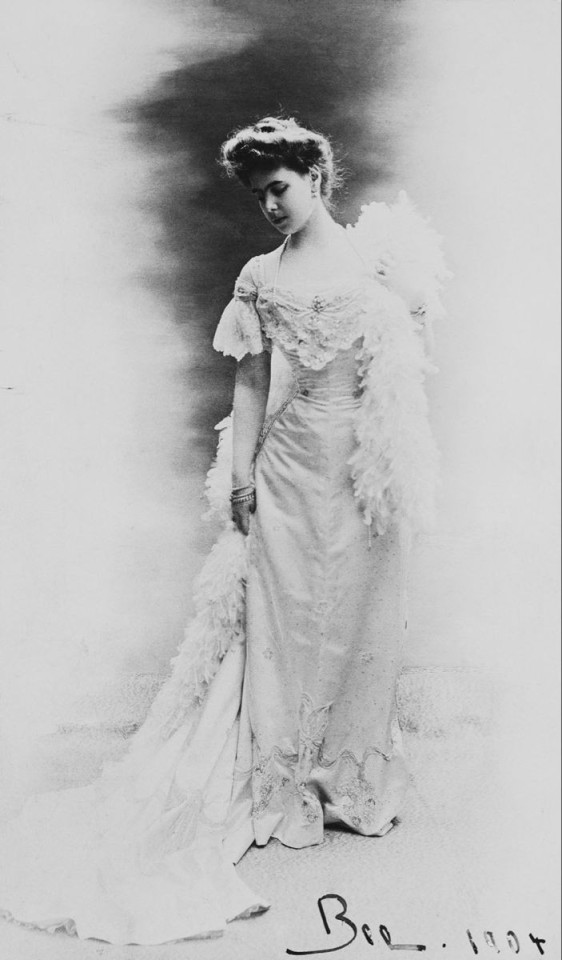
#answered ask#queen alexandra#alexandra of denmark#empress maria feodorovna#dagmar of denmark#grand duchess tatiana nikolaevna#victoria princess royal#empress victoria of germany#maud of wales#queen maud of norway#grand duchess elisabeth feodorovna#elisabeth of hesse#queen sophia of greece#princess sophia of prussia#queen marie sophie of the two sicilies#duchess marie sophie in bavaria#princess margaret#countess of snowdon#princess beatrice of edinburgh#duchess of galliera
6 notes
·
View notes
Note
Hi!
If you don’t mind me asking, which parent do you think Sisi and each of her siblings looked more like?
I think Helene looked like Max, Sisi, Maria Sophie, Mathilde and Sophie Charlotte looked like Ludovika and Karl Theodor, Ludwig Wilhelm anc Maximilian Emmanuel looked like a mix of their parents.
Hi! No I don't mind at all, I like this type of questions since I usually don't talk much about these kind of things.
Personally I agree on you with Elisabeth and Mathilde, they both looked a lot like their mom:
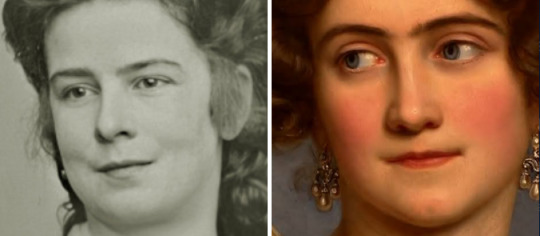
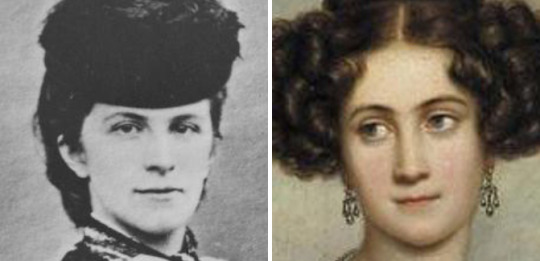
To me Marie resembled a bit more to her dad, specially the shape of her face (notice how they both had the same parted chin)
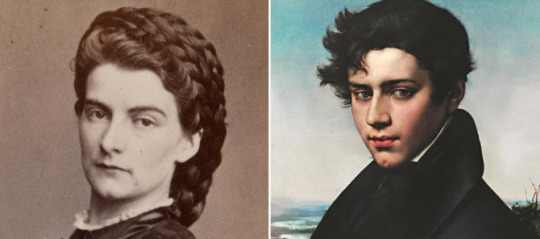
I don't think Sophie resembled particularly to one of her parents, tho as an older woman I think she looked a lot like her grandmother Queen Caroline.
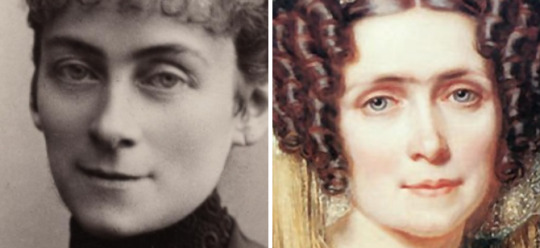
With Helene I can't settle, to be honest. Here is a comparison with her parents' portraits. Maybe she also looked more like a grandparent?

As for the guys: I also think they looked like a mix of their parents, tho as he grew older Ludwig Wilhelm resembled more to his dad.



In general you can see the family resemblance (remember Ludovika and Max were cousins lol) in all the kids, tho I wish we had more portraits, or better, actual pictures of their parents in their youth to compare them better.
#i tried to use different pics of max and ludovika but at the end i gave up jhjhjgk#asks#ludovika of bavaria duchess in bavaria#empress elisabeth of austria#queen marie sophie of the two sicilies#mathilde in bavaria countess of trani#sophie in bavaria duchesse d'aleçon#helene in bavaria hereditary princess of thurn und taxis#duke maximilian emanuel in bavaria#duke ludwig wilhelm in bavaria#karl theodor duke in bavaria#queen caroline of bavaria#maximilian joseph duke in bavaria
7 notes
·
View notes
Photo
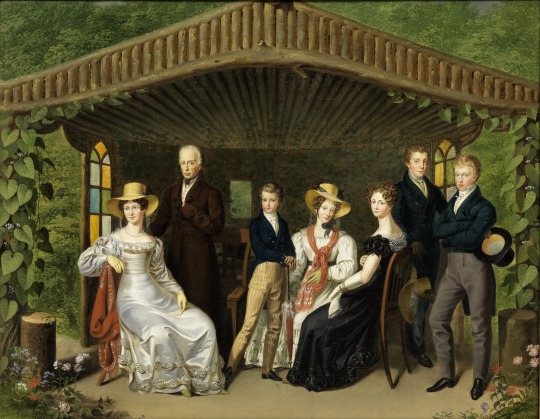

The Imperial Family Around the Duc de Reichstadt in a Gazebo by Leopold Fertbauer, 1926.
From left to right: Caroline Augusta of Bavaria, Empress of Austria; Francis I, Emperor of Austria; Napoleon II of France, Duke of Reichstadt; Princess Sophie of Bavaria, Archduchess of Austria; Marie-Louise of Austria, Duchess of Parma; Ferdinand I of Austria; and Archduke Franz Karl of Austria.
link

32 notes
·
View notes
Photo
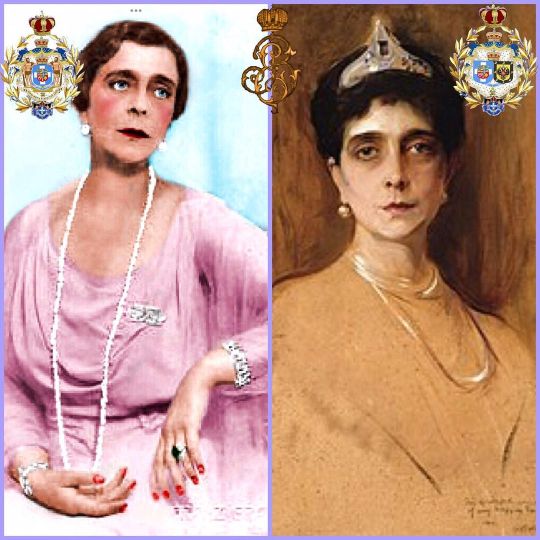
66 years since the death of HI&RH Princess Helena of Greece and Denmark Grand Duchess Elena Vladimirovna of Russia (29 January 1882 – 13 March 1957). Princess Helena was the only daughter and youngest child of Grand Duke Vladimir Alexandrovich of Russia and Duchess Marie of Mecklenburg-Schwerin. Her husband was Prince Nicholas of Greece and Denmark and they were both first cousins of Emperor Nicholas II of Russia. They had 3 children : 1)Princess Olga of Greece married Prince Paul of Yugoslavia; 2)Princess Elizabeth of Greece married Count Karl Theodor zu Toerring-Jettenbach, son of Duchess Sophie in Bavaria and scion of an old and rich Bavarian mediatized family; and 3)Princess Marina of Greece married the Prince George, Duke of Kent in November 1934.She was also first cousin of Queen Juliana of the Netherlands and Alexandrine of Mecklenburg-Schwerin, Queen consort of Denmark and the grandmother of Prince Edward, Duke of Kent, Princess Alexandra, the Honourable Lady Ogilvy, and Prince Michael of Kent. Princess Elena became a widow early in 1938, as Prince Nicholas suffered a heart attack and died suddenly. She remained in Greece throughout the Second World War, dying there in 1957 and she is buried in the Royal Cemetery in Tatoi Royal Estate close Athens. #royal #royalty #royals#greekroyals#greekroyalfamily#danishroyals#danishroyalfamily#queenannemarie#crownprincessmariechantal#princessmariechantal#crownprincepavlos#princepavlos#kingconstantine#princessmarieolympia#princessolympia#princeconstantinealexios#princenikolaos#princesstatiana#princeachileasandreas#princeodysseaskimon#princearistidesstavros #princephilipos #princessnina #princesstheodora#queenofgreece #princessofgreece#princeofgreece #dukeofsparta#kingofgreece https://www.instagram.com/p/CpuKKvLoaa9/?igshid=NGJjMDIxMWI=
#royal#royalty#royals#greekroyals#greekroyalfamily#danishroyals#danishroyalfamily#queenannemarie#crownprincessmariechantal#princessmariechantal#crownprincepavlos#princepavlos#kingconstantine#princessmarieolympia#princessolympia#princeconstantinealexios#princenikolaos#princesstatiana#princeachileasandreas#princeodysseaskimon#princearistidesstavros#princephilipos#princessnina#princesstheodora#queenofgreece#princessofgreece#princeofgreece#dukeofsparta#kingofgreece
4 notes
·
View notes
Text
Empress Elisabeth of Austria-Hungary
Empress Elisabeth of Austria-Hungary was born on December 24th, 1837 as Duchess Elisabeth Amalie Eugenie to Duke Maximilian and Princess Ludovika of Bavaria. Elisabeth was called Sisi. The majority of her childhood was spent at Possenhofen Castle in Bavaria, Germany. Aside from her parents unhappy marriage due to her fathers affairs, Sisi and her seven (surviving) siblings had a relatively happy childhood. Sisi enjoyed being outside the most. She would swim in the lake and go horseback riding. Below is presumably the first photo taken of Sisi when she was a little girl.
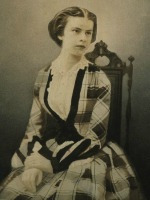
Emperor Franz Joseph l’s mother Archduchess Sophie, also Ludovika’s sister, had contacted Ludovika and told her than Sisi’s older sister Helene would be engaged to Franz Joseph. Franz and Helene were set to meet at the Kaiser villa in Bad Ischl. Ludovika decided to take Sisi along with them to help Helene adjust to the imperial lifestyle. Sisi was 15 and Helene was 18 at the time. Below is an image of Helene as a young adult (maybe 18-19)
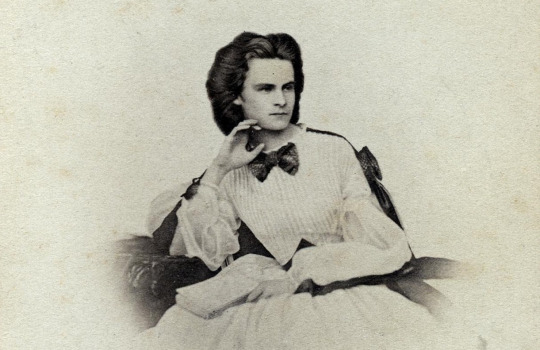
Franz Joseph was not known for disagreeing with his mother, much less defying her. Imagine the courts surprise when Franz decided to marry Sisi instead of Helene. Franz and Sisi’s engagement was announced 5 days after they’d met. On April 24th, 1854 Franz and Sisi were married in Vienna. Below is an image of Franz Joseph and Elisabeth.
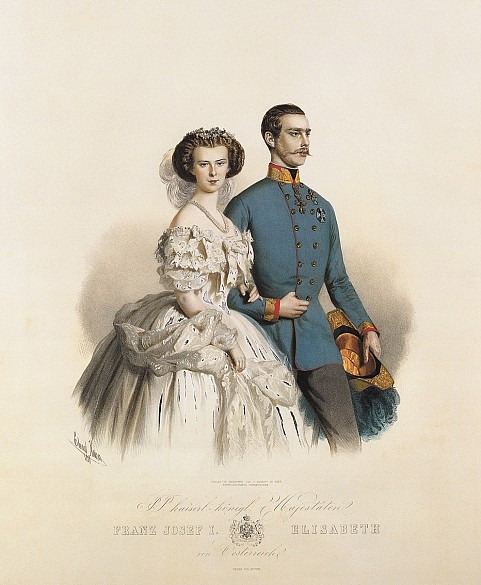
The Hapsburg court was known for being strict, formal, and steeped in tradition. Sisi was shocked when her life of freedom became a prison of protocol and formality. She never did adjust. Sisi had a horrible relationship with her mother-in-law. Archduchess Sophie believed that the Empress’s only duty was to produce an heir for the throne. Sophie believed that the Empress should never be involved in politics or affairs of the state. Sisi did not agree. She was adamant about improving the lives of the people in the Italian and Hungarian parts of the Austrian Empire and would regularly try to influence her husband. Below is an image of Archduchess Sophie.
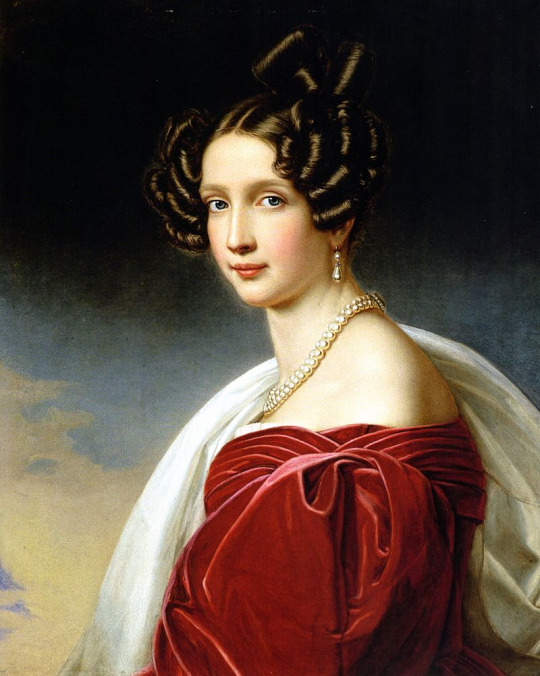
Even through the suffocation of Sophie’s constant pressure for a baby boy, Elisabeth did have four children. Her first was a baby girl, Sophie, born on March 5th, 1855. Her mother-in-law took the baby away from Sisi and named her after herself. Sophie refused to let Sisi take care of her baby. Then, Sisi had another baby girl, Gisela, on July 15th, 1856. Again, Sophie took the baby and Sisi couldn’t care for either of her children. The tragedy wasn’t over yet. In 1857, Sisi and Franz took a family trip with the girls to Hungary against the advice of both Sophie and the court physician. Both the girls became sick and Princess Sophie died. This caused Sisi to fall into a deep depression. Franz and Sophie brushed off her behavior. However, Sisi gave birth to another baby, but this time it was a boy. On August 21st, 1858 Crown Prince Rudolf was born. Rudolf was taken from Sisi and was raised by tutors at the age of 6. Sisi was blocked from the education of her children. In 1867 Sisi and Franz were crowned King and Queen of Hungary. A year later, Sisi gave birth to Marie Valerie on April 22nd, 1868. Below are images of Sisi’s children in order of birth.
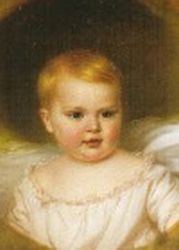
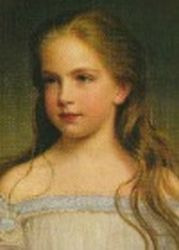
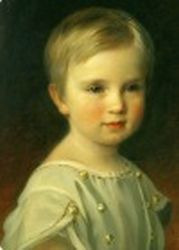

Sisi had very little control over many things in her life. However, one thing she did have control over was her body. She dieted constantly and became obsessed with her beauty. That’s how she kept her slender waist that she’s very famous for. Sisi spent a ton of time in Hungary with her youngest child. Sophie hated Hungary and this allowed Sisi to raise Marie on her own. Sophie died in 1872 and Sisi was finally free from her mother-in-law. There is one tragedy that Sisi would never get over. In 1889 Rudolf was found dead with his mistress which was done by their own hands.
On September 10th, 1898 Sisi was killed by an Italian Anarchist while boarding a boat in Geneva. She was stabbed in the heart and had not realized what had happened to her. She died a few hours later.
Source: https://www.palaces-of-europe.com/empress-sisi.html
3 notes
·
View notes
Text
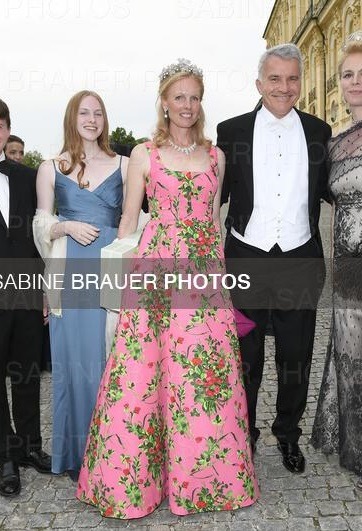
TIARA ALERT: Duchess Elisabeth Marie of Bavaria wore the Bavarian Pearl Floral Tiara for the ball following the wedding of Prince Ludwig & Princess Sophie of Bavaria at Schleissheim Palace in Munich, Germany on 20 May 2023.
#Tiara Alert#Duchess Elisabeth Marie#Bavaria#Bavarian Royal Family#tiara#Germany#German Royalty#pearl#floral tiara
41 notes
·
View notes
Text
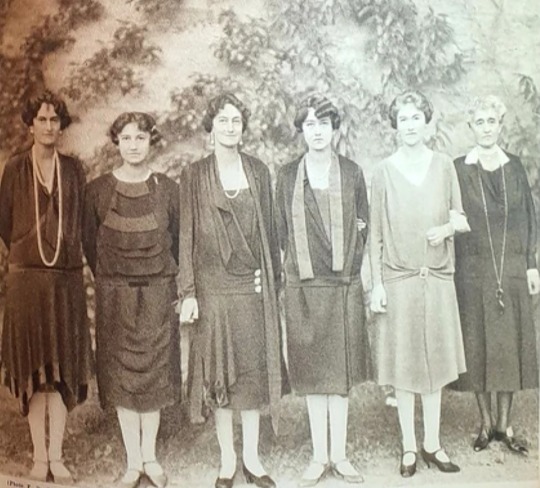

Dowager Grand Duchess Marie Anne of Luxembourg and her five surviving daughters, Grand Duchess Charlotte, Princess Hilda, Crown Princess Antonia of Bavaria, Princess Elisabeth of Thurn and Taxis and Princess Sophie of Saxony, late 1920s.
#dowager grand duchess marie anne of luxembourg#grand duchess marie anne of luxembourg#grand duchess charlotte of luxembourg#princess hilda of luxembourg#princess antonia of luxembourg#crown princess antonia of bavaria#princess elisabeth of thurn and taxis#princess elisabeth of luxembourg#princess sophie of saxony#princess sophie of luxembourg#luxembourg#luxembourg royal family#1920s#late 1920s
23 notes
·
View notes